Insider Louvre: From a Royal Palace to a Museum
Set out on a journey through time as we unravel the captivating transformation of the Louvre from a regal abode to a cultural sanctuary.
Discover the intricate layers of history woven into its walls and corridors, resonating with stories of monarchs, artists, and visionaries.
Witness firsthand the evolution of this architectural marvel and the priceless treasures it houses, each piece a testament to the enduring legacy of human creativity and ingenuity.
As we peel back the layers of this enigmatic institution, prepare to be transported to a realm where art, history, and innovation converge in a mesmerizing tapestry waiting to be explored further.
Key Points
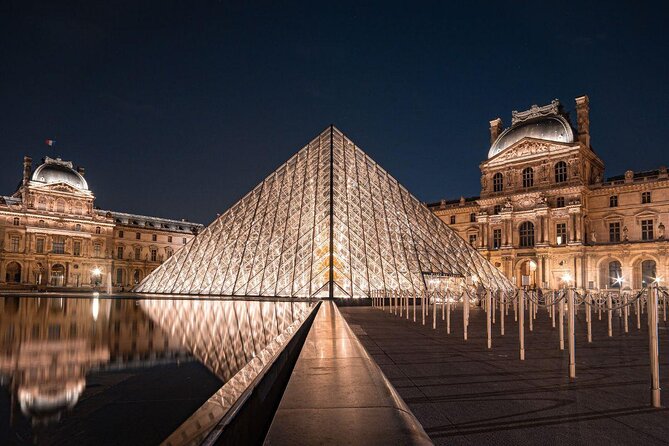
- The Louvre transformed from a fortress to a museum, symbolizing a shift from monarchy to public art space.
- Iconic art pieces like the Mona Lisa and Venus of Milo attract visitors to explore artistic treasures.
- Architectural highlights such as the Pyramid and the Louvre Palace reflect French art evolution.
- Behind-the-scenes insights reveal the dedication and expertise of staff, educating and inspiring visitors.
Historical Evolution of the Louvre
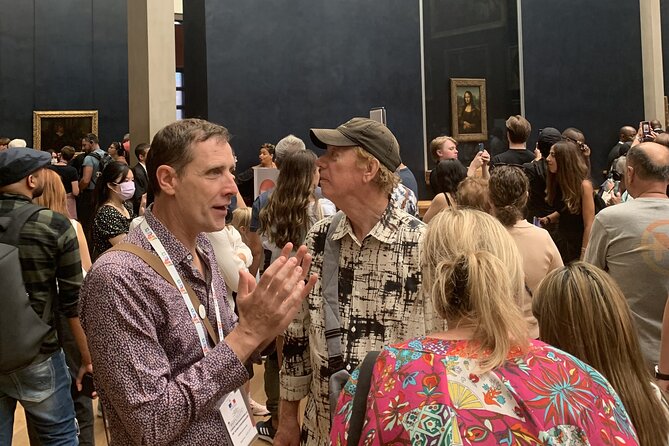
How did the Louvre, originally built as a fortress in the late 12th century, transform into one of the world’s most renowned museums housing priceless art and artifacts?
Over the centuries, the Louvre underwent several transformations, evolving from a royal residence to a repository of artistic masterpieces. Initially serving as a fortress under King Philip II, the Louvre later housed royal collections under subsequent monarchs.
The shift towards becoming a museum began during the French Revolution when the Louvre was opened to the public, showcasing a growing collection of art. Today, the Louvre stands as a symbol of art appreciation, boasting a vast array of artistic treasures that attract millions of visitors annually.
Transition From Royal Residence to Museum
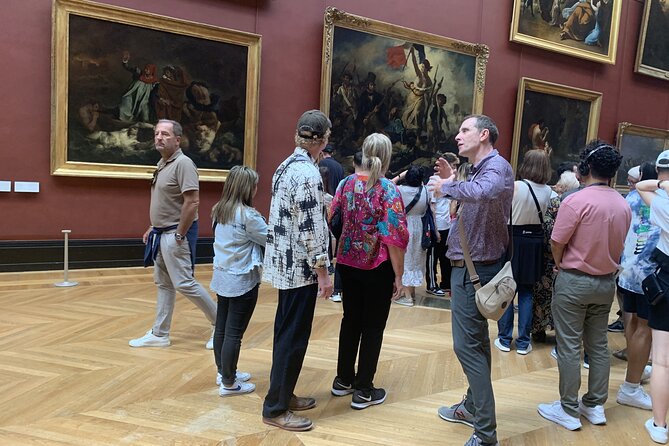
The evolution of the Louvre from a fortress and royal residence to a world-renowned museum housing invaluable artworks and historical artifacts showcases a remarkable journey of cultural transformation over the centuries.
This royal transformation took place in the late 18th century when the Louvre was converted from a symbol of monarchical power into a public space dedicated to art and education. The transition not only preserved the architectural grandeur of the royal palace but also opened its doors to the public, allowing visitors to marvel at the artistic treasures once exclusively viewed by royalty.
This shift marked a pivotal moment in the history of the Louvre, setting the stage for its future as a beacon of artistic excellence and cultural heritage.
Iconic Art Pieces and Exhibits
Among the plethora of treasures housed within the Louvre Museum, stands the iconic Mona Lisa, captivating visitors with her enigmatic smile and timeless allure. This masterpiece by Leonardo da Vinci is a must-see, drawing crowds eager to decipher the secrets behind her expression.
Another renowned piece is the Venus of Milo, an ancient Greek sculpture celebrated for its beauty and graceful pose. Art interpretation at the Louvre goes beyond these famous works, offering visitors a chance to explore hidden gems tucked away in the vast collection.
From lesser-known paintings to intricate sculptures, every corner of the museum holds artistic wonders waiting to be discovered and appreciated by those who seek a deeper connection with art.
Architectural Highlights of the Louvre
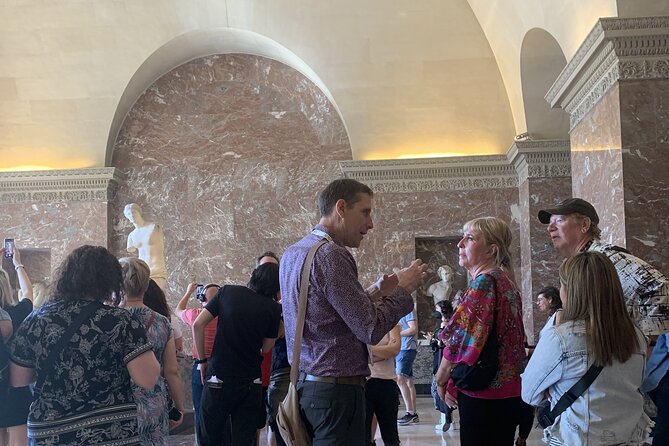
Exploring the Louvre’s architectural marvels unveils a captivating narrative that intertwines history, grandeur, and artistic vision within its walls. The Louvre’s architecture stands as a testament to the evolution of French art and culture, with highlights including:
-
The Pyramid: Designed by architect I.M. Pei, the glass pyramid serves as the museum’s main entrance, blending modernity with the classical architecture of the Louvre.
-
The Cour Carrée: This square courtyard, dating back to the Renaissance period, showcases the elegant symmetry and grandeur of French architecture.
-
The Louvre Palace: Originally a royal palace, the building itself is a masterpiece, with wings added over centuries, housing artistic treasures that reflect different historical periods.
The Louvre’s architecture provides a stunning backdrop for the artistic masterpieces it contains.
Behind-the-Scenes Insights
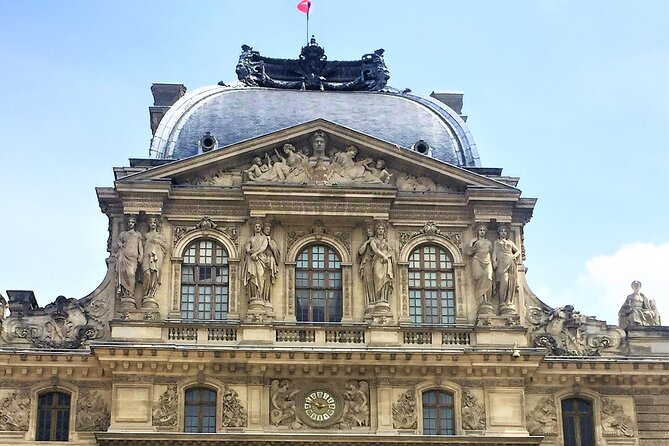
Unveiling the intricacies of the Louvre’s inner workings provides a fascinating glimpse into the museum’s hidden world of preservation and curation. Behind-the-scenes stories reveal the meticulous care taken to safeguard priceless artworks and artifacts, showcasing the dedication of the museum staff.
Curator interviews offer valuable insights into the thought processes behind exhibit selections, restoration processes, and the overall narrative woven throughout the museum’s galleries. These behind-the-scenes glimpses highlight the expertise and passion that drive the Louvre’s mission to educate and inspire visitors.
Visitor Experience and Reviews
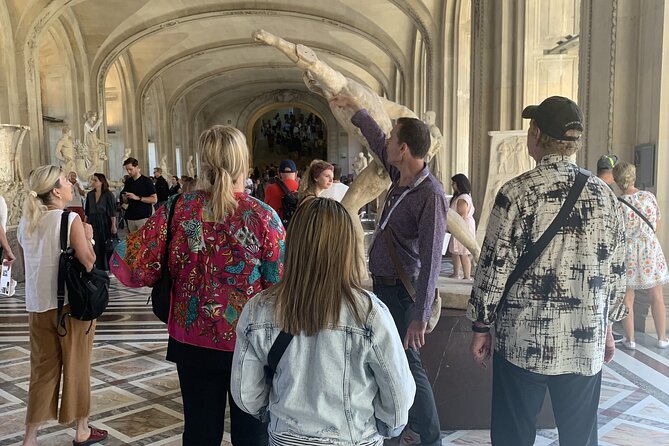
A key aspect of the Louvre’s allure lies in the firsthand accounts and impressions shared by visitors, providing valuable insights into their experiences within one of the world’s most iconic museums.
Visitor Experience and Reviews:
-
Visitor Feedback: Many visitors rave about the knowledgeable guides who offer in-depth insights into the museum’s history and art pieces, enhancing the overall tour experience.
-
Tour Highlights: Popular highlights mentioned in reviews include the chance to explore the 12th-century foundations, hidden dungeons, royal apartments, as well as iconic artworks like the Mona Lisa, Venus of Milo, and the French crown jewels.
-
Exceptional Ratings: The Louvre tours consistently receive 5-star ratings on platforms like Viator and Tripadvisor, with travelers praising the exceptional service, informative guides, and memorable experiences.
Logistics and Pricing Information

Providing essential details for visitors, the logistics and pricing information for the Louvre private guided tour offer a rundown of the experience awaiting guests. Ticket availability for the tour is subject to booking in advance, with group discounts available for larger parties. The meeting point is conveniently located at Place du Carrousel in Paris, with the tour concluding back at the same spot.
Visitors can enjoy a full refund if the tour is canceled 24 hours before the scheduled time. The pricing varies depending on the group size, starting from £131.09. Additionally, Viator provides detailed Terms & Conditions and a dedicated Help Center for any inquiries or concerns regarding the tour.
Common questions

Are There Any Secret Passageways or Hidden Rooms in the Louvre That Visitors Can Explore?
Exploring the Louvre, visitors can uncover hidden passages, secret rooms, mysterious tunnels, and concealed chambers, adding an element of intrigue to the museum experience. These secretive spaces offer a glimpse into the historical mysteries of the Louvre.
What Are Some Lesser-Known Facts or Myths About the Louvre’s History That Most People Are Not Aware Of?
The Louvre holds intriguing secrets and historical myths waiting to captivate visitors. Discover hidden passageways, enigmatic symbols, and royal scandals, unveiling a rich tapestry of intrigue beyond its renowned art collection. Explore the Louvre’s enigmatic past.
Can Visitors Access Any Restricted Areas or Exclusive Collections Not Typically Open to the Public During the Tour?
During the private guided tour at the Louvre, visitors gain VIP access to hidden treasures and exclusive collections behind the scenes. This immersive experience offers a unique opportunity to explore restricted areas not typically open to the public.
Are There Any Special Events or Exhibitions Happening at the Louvre That Visitors Should Be Aware of Before Booking a Tour?
Visitors should check for special events, temporary exhibitions, museum renovations, interactive installations, educational programs, guided tours, audio guides, and virtual reality experiences before booking a tour at the Louvre. Stay informed for an enriched visit.
How Does the Louvre Ensure the Preservation and Conservation of Its Priceless Art and Artifacts for Future Generations to Enjoy?
Preservation techniques at the Louvre, such as climate control, light exposure management, and regular maintenance, safeguard its priceless art and artifacts. Security measures, including advanced surveillance systems and trained personnel, further ensure the protection for future generations to enjoy.
Last Words
To sum it up, the Louvre’s transformation from a royal palace to a world-renowned museum showcases centuries of history, art, and culture.
With its iconic art pieces, architectural marvels, and behind-the-scenes insights, the Louvre offers a truly unique and enriching experience for visitors.
Explore the wonders of this historic landmark and uncover the hidden treasures that make it a must-see destination for art and history enthusiasts alike.